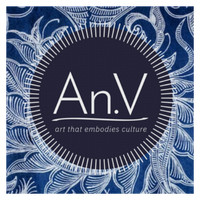Miao and Buyi Batik: An Overview of the Long-standing Art Form
- Yanyi L.

- Aug 8
- 2 min read
Updated: Aug 31
Origins/cultural Significance
For over 2000 years, the Miao, Dong, and Buyi ethnic groups have decorated their dresses and everyday items with batik patterns in the deep mountains of Southwestern China. In those villages, girls start learning batik from their mothers right after they enter into their teenage years. Batik patterns adorn every aspect of a Miao, Dong, or Buyi girl’s dress: from her shoes to her collars, the patterns of butterflies, flowers, fish, and other common elements embellish the otherwise simple fabrics.
Batik is the language through which stories of the Miao, Dong, and Buyi ethnic groups were passed down in the times when they had not yet developed a writing system. For this reason, each pattern tells its own unique traditional story. Similarly, Miao girls believe that, by wearing their batik dresses, they can be protected and empowered by all their ancestors that came before.
Process
The most traditional batik is made from three simple elements: a white piece of hand-woven cotton fabric, beeswax, and the Chinese indigo or woad plant, which gives a blue shade when boiled. The sketcher uses a small, trapezoid-shaped wax knife that is layered to hold the wax, dips it slightly into a molten bowl or plate of wax, and then knocks it gently against the edge of the container to ensure that there is just the right amount of wax. If the knife holds too much wax, then the lines will not be smooth and even.
After she (we are going to use “she” here, since Chinese batik has been passed down generationally mostly through women) loads the wax into the knife, the sketcher holds it at a 45-degree angle, gripping the knife in the Chinese brush-holding posture. Most commonly, the sketcher does not prepare a line drawing before she starts with the wax. Her experiences are plenty, and she is able to go right into the drawing. Even without a sketch, though, the sketcher can improvise a very refined and symmetrical design.
Common Subjects
A very common subject in Miao batik is the Butterfly Mother, whom the Miao people believe to be their creato
r. Depictions of the Butterfly Mother might look just like a simplified butterfly, but it can also look like a woman with two wings. At batik's creation, the Miao people did not have a written language, so they recorded their stories and myths down on their clothing using batik. Other traditional designs include flowers, leaves, fruits, birds, insects, and fish.
More modern subjects range all the way from figures to landscapes to dixi masks (another aspect of Guizhou culture, which can be seen in the Gallery).




Comments